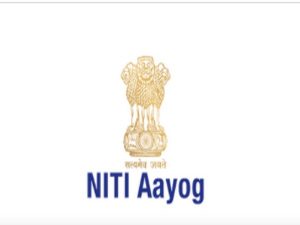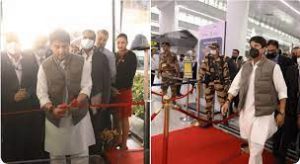Today Current Affairs: 3rd December 2022 for UPSC IAS exams, State PSC exams, SSC CGL, State SSC, RRB, Railways, Banking Exam & IBPS, etc
Table of Contents
Exercise Agni Warrior 2022:

The 12th Edition of Exercise Agni Warrior recently concluded on 30 November 2022.
- It is a bilateral exercise between the Singapore & Indian Army.
- Exercise Agni Warrior, involved showcasing joint firepower planning, execution and use of New Generation Equipment by the Artillery arm of both armies.
- Exercise also included participation by both sides in a joint computer war-game as part of joint planning process.
- Both sides utilised niche technology and Artillery Observation Simulators as part of joint training phase.
- Indigenously manufactured Artillery guns and howitzers also participated during the final phase of the exercise.
- The exercise achieved its aim of enhancing mutual understanding of drills & procedures and improving interoperability between the two armies.
Baguette : UN’s List Of Intangible Cultural Heritage

Baguette ,the staple French bread was recently inscribed into the UN’s list of intangible cultural heritage (ICH).
- The baguette is a long and thin loaf made of flour, water, salt and yeast, and is consumed as a staple in France.
- Some believe that it was invented by August Zang, a baker and an entrepreneur from Vienna in 1839.
- In March 2021, France nominated the baguette as its candidate for consideration within the UNESCO ICH list. It drew attention to the steady decline in the number of bakeries in the country as around 20,000 of them have closed down since 1970.
Intangible cultural heritage:
- UNESCO defines “intangible” as “expressions that have been passed from one generation to another, have evolved in response to their environments and contribute to giving us a sense of identity and continuity…”
- ‘Intangible cultural heritage’ includes “oral traditions, performing arts, social practices, rituals, festive events, knowledge and practices concerning nature and the universe or the knowledge and skills to produce traditional crafts.”
- There are three criteria for an intangible cultural heritage to be inscribed in the United Nations list.
- The entity must
- be recognized by communities, groups and, in some cases, individuals as part of their cultural heritage
- be transmitted from generation to generation and be constantly recreated by communities and groups in response to their environment, their interaction with nature and their history and
- provide them with a sense of identity and continuity, thus promoting respect for cultural diversity and human creativity,”
Community Innovator Fellowship program:

Atal Innovation Mission (AIM), NITI Aayog has recently announced the launch of applications for Community Innovator Fellowship (CIF).
- The initiative aims at facilitating knowledge building and provides infrastructure support to aspiring community innovators essential for their entrepreneurship journey.
- Currently there are 22 Community Innovator fellows being incubated at the Atal Community Innovation Centre (ACIC) program of AIM.
- A Community Innovator Fellow is an individual with an entrepreneurial mind-set, with an idea to solve a community challenge through her or his enterprise.
- This is a one-year-long intensive fellowship program wherein an aspiring community innovator can apply irrespective of their socio-economic background.
- AIM has been setting up Atal Community Innovation Centres across the country.
- Currently there are 14 such centres, spread across 9 states and 36 more are coming up in the near future to take the collective number to 50 such Centres.
Wassenaar Arrangement : India To Assume Chairmanship

External Affairs Ministry recently said that India will assume chairmanship of Wassenaar arrangement on 1 Jan 2023.
- The Wassenaar Arrangement has been established in order to contribute to regional and international security and stability, by promoting transparency and greater responsibility in transfers of conventional arms and dual-use goods and technologies, thus preventing destabilising accumulations.
- The body came into being in 1996 to succeed the Cold War-era Coordinating Committee for Multilateral Export Controls.
- The name comes from Wassenaar, a suburb of The Hague, where the agreement to start such a multi-lateral cooperation was reached in 1995.
- Members: 42
- India joined the Wassenaar Arrangement in December 2017 as its 42nd participating state.
- The Arrangement is based on five crucial principles:
- It contributes to regional and international security and stability.
- It promotes transparency and greater responsibility in transfers of conventional arms and dual-use goods and technologies.
- It complements and reinforces the export control regimes for weapons of mass destruction and their delivery systems.
- It is not directed against any state or group of states.
- It uses export controls as a means to combat terrorism.
UN Security Council : Presidency Of India

On 1st December, India assumed the monthly rotating presidency of the UN Security Council (UNSC) for the second time in its two-year tenure as an elected member of the Council in 2021-22.
- India has served seven times in the UN Security Council as a non-permanent member and in January 2021, India entered the UNSC for the eighth time.
- India has been advocating a permanent seat in UNSC.
- Each member of the Security Council has one vote. Decisions of the Security Council on matters are made by an affirmative vote of nine members including the concurring votes of the permanent members.
- A “No” vote from one of the five permanent members blocks the passage of the resolution
- India will hold a “high-level open debate” on “Maintenance of International Peace and Security: New Orientation for Reformed Multilateralism (NORMS)” at the Security Council.
- The NORMS envisages reforms in the current multilateral architecture, with the UN at its centre, to make it more representative and fit for purpose.
- The other signature event planned is the high-level briefing on the theme “Threats to International Peace and Security Caused by Terrorist Acts: Global Approach to Counter Terrorism — Challenges and Way Forward”.
- This briefing intends to underscore the necessity of collective and coordinated efforts to combat the menace of terrorism.
UNSC:
- The Security Council was established by the UN Charter in 1945. It is one of the six principal organs of the United Nations.
- The other 5 organs of the United Nations are—the General Assembly (UNGA), the Trusteeship Council, the Economic and Social Council, the International Court of Justice, and the Secretariat.
- The UNSC, with a mandate to maintain international peace and security, is the centrepiece of global multilateralism.
- The Secretary-General is appointed by the General Assembly, on the recommendation of the Security Council.
- The UNSC and UNGA jointly elect judges to the International Court of Justice.
DigiYatra : Functional At Three Airports In The Country

Digi Yatra is now functional at three airports in the country.
- Digi Yatra is a project conceived to achieve contactless, seamless processing of passengers at Airports, based on Facial Recognition Technology (FRT)
- Launched by the Ministry of Civil Aviation
- Digi Yatra Foundation, a not-for-profit company, is the nodal body for DigiYatra
- It is a joint venture with AAI (26% share) and 5 Airports (BIAL, DIAL, GHIAL, MIAL and CIAL).
- Digi Yatra Foundation will be a pan-India entity and the custodian of the Passenger ID validation process.
Bulletin On Maternal Mortality Ratio:

The Registrar General of India released a special bulletin on Maternal Mortality Ratio (MMR). It revealed that India achieved a significant milestone by reaching the National health policy (NHP) target for MMR.
- The maternal mortality ratio (MMR) is the number of maternal deaths during a specific time period per 100,000 live births during the same period.
- It is a tool used to indicate the risk of maternal death relative to the number of live births, capturing the risk of death in a single pregnancy or a single live birth.
- India’s MMR fell from 130 per 100,000 live births in 2014-16 to 97 per lakh live births in 2018-20.
- In 2014-2016, the MMR was 130, it was 122 in 2015-17, 113 in 2016-18, 103 in 2017-18 and 97 in 2018-20.
- With the 2018-20 MMR, India achieved the National Health Policy (NHP) target for MMR of less than 100 per 100,000 live births.
- It is currently on track to achieve the SDG Target 3.1, which aims to reduce global maternal mortality ratio to less than 70 per 1 lakh live births.
- Assam currently has the highest MMR of 195, followed by Madhya Pradesh with an MMR of 173 and Uttar Pradesh with MMR of 167 per 1 lakh live births.
- Other states with high MMR are Chhattisgarh (137), Odisha (119), Bihar (118), Rajasthan (113), Haryana (110), Punjab (105) and West Bengal (105).
- Many of these states belong to the Empowered Action Group (EAG) – a group of socio-economically poor regions.
- Kerala had the lowest MMR of 19 per 100,000 live births.
- It is followed by Maharashtra (33) and Telangana (43), Andhra Pradesh (45) and Gujarat (57).
Panel On MGNREGA Restructuring:

The Central Government has set up a panel to recommend structural and other reforms required for the effective implementation of the Mahatma Gandhi National Rural Employment Guarantee Act
- The panel will be headed by Amarjeet Sinha – the former Rural Development Secretary and advisor in the PMO.
- Chief Economic Advisor Anantha Nageswaran is one of the members of this panel.
- The panel met for the first time in November 21 this year.
- It is expected to submit its report by February 2023.
- The MGNREGA was enacted in 2005 to implement a demand-driven scheme that guarantees 100 days of unskilled work per year for any rural household that requires it.
- The panel is tasked with assessing various factors behind the demand for MGNREGA work, expenditure incurred by the government, inter-state variations, and the composition of work.
- The panel will also look into the argument that the cost of providing work under MGNREGA has surged since the scheme was launched.
- It will provide recommendations on changes in focus areas and governance structures to make MGNREGA more effective.
- The Panel will study the composition of work taken up under the MGNREGA, which has been criticized for not providing tangible assets.
- It will provide recommendations on whether the composition of work must be changed and review whether the scheme should focus more on community-based assets or individual works.




